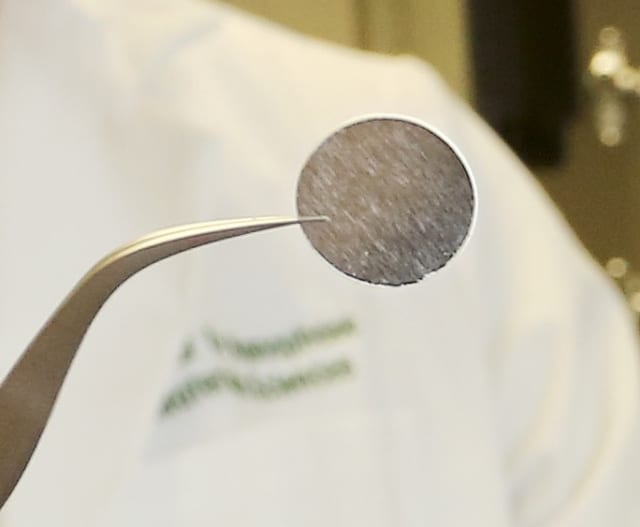Researchers at Oak Ridge National Laboratory are hot on the trail of a lithium-sulfur battery that packs four times the punch of conventional lithium-ion batteries.
Given the low cost of sulfur, if the technology can be commercialized it would have a huge impact on the market for energy-storing devices powered by wind, solar or other forms of renewable energy. The low cost lithium-sulfur combo could also open up the electric vehicle market, and another project at the University of Arizona is already working along that track. As Satchel Paige would say, don’t look back, Oak Ridge. Something might be gaining on you.
Lithium-Sulfur Battery From Oak Ridge National Laboratory
The new lithium-sulfur battery solves a “catch-22″ that has bedeviled several generations of energy storage researchers, namely, the liquid electrolytes used in conventional lithium-sulfur batteries. The liquid dissolves the lithium-sulfur compound to help conduct ions through the battery, but that also contributes to a rather short-lived battery.
To get around that obstacle, the ORNL team developed a unique class of solid, sulfur-based materials that perform as well as lithium oxides, in terms of the ability to conduct ions.
The battery consists of a sulfur-enriched cathode paired with a lithium anode and a solid electrolyte (btw the electrolyte material is also unique to ORNL). Here is the result as described by ORNL:
“The new ionically-conductive cathode enabled the ORNL battery to maintain a capacity of 1200 milliamp-hours (mAh) per gram after 300 charge-discharge cycles at 60 degrees Celsius. For comparison, a traditional lithium-ion battery cathode has an average capacity between 140-170 mAh/g. Because lithium-sulfur batteries deliver about half the voltage of lithium-ion versions, this eight-fold increase in capacity demonstrated in the ORNL battery cathode translates into four times the gravimetric energy density of lithium-ion technologies.”
Also of note is the safety improvement of the new battery, which eliminates the flammability risk posed by the potential for liquid electrolytes to react with lithium metal.
Don’t Look Back…
Barely a month ago, CleanTechnica reported on a research team at the University of Arizona, which has also been making progress on the lithium-sulfur front with a simple process for converting sulfur to a new form of plastic. The process uses waste sulfur created from petroleum refining, and it outperforms elemental sulfur when used in lithium-sulfur batteries.
For that matter, earlier today we also took note of an altogether different alternative battery technology under development at Los Alamos National Laboratory, based on carbon nanotubes doped with nitrogen, and our sister site Gas2.org has been tracking the development of lithium-air batteries (then there’s also zinc-air, but you get the idea).
More And Better EV Batteries
Aside from greater energy density and lower cost, lithium-sulfur technology also has a weight advantage over li-ion EV batteries, which are extremely heavy. In terms of their potential use in EVs that gives lithium-sulfur batteries a nice little twofer, contributing to an EV that weighs less and costs less, too.
You could stretch that into a threefer, when you take into account the use of reclaimed waste sulfur in lithium-sulfur batteries.
As for smaller electric devices and portable electronic gear, consider that mainstream lifestyle technology is drifting farther and farther away from the tether of a wall outlet, let alone an extension cord. The next logical step is to push lightweight, portable energy scavenging/storage devices into the mainstream, and low cost technology like lithium-sulfur could be the key that unlocks the door.
This article was originally posted on Cleantechnica. Re-produced with permission.










